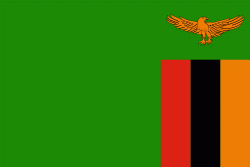Samfya District (Samfya District)
Samfya District is located in Luapula Province, Zambia. The headquarters is at Samfya.
Most of Samfya District is lake, swamp of floodplain. It covers Lake Bangweulu and the Bangweulu swamps, except for the north-east corner which lies in Chilubi District of Northern Province. The only extensive dry land is along its western edge where it borders Milenge and Mansa districts. There are numerous inhabited islands in the lake and swamps, as well as peninsulas almost entirely surrounded by water, such as the Twingi Peninsula.
As of the 2000 Zambian Census, the district had a population of 163,609 people.
Most of Samfya District is lake, swamp of floodplain. It covers Lake Bangweulu and the Bangweulu swamps, except for the north-east corner which lies in Chilubi District of Northern Province. The only extensive dry land is along its western edge where it borders Milenge and Mansa districts. There are numerous inhabited islands in the lake and swamps, as well as peninsulas almost entirely surrounded by water, such as the Twingi Peninsula.
As of the 2000 Zambian Census, the district had a population of 163,609 people.
Map - Samfya District (Samfya District)
Map
Country - Zambia
 |
 |
| Flag of Zambia | |
The region was affected by the Bantu expansion of the 13th century. Following the arrival of European explorers in the 18th century, the British colonised the region into the British protectorates of Barotseland-North-Western Rhodesia and North-Eastern Rhodesia comprising 73 tribes, towards the end of the 19th century. These were merged in 1911 to form Northern Rhodesia. For most of the colonial period, Zambia was governed by an administration appointed from London with the advice of the British South Africa Company. On 24 October 1964, Zambia became independent of the United Kingdom and prime minister Kenneth Kaunda became the inaugural president. From 1972 to 1991 Zambia was a one-party state with the United National Independence Party as the sole legal political party under the motto "One Zambia, One Nation" coined by Kaunda. Kaunda was succeeded by Frederick Chiluba of the social-democratic Movement for Multi-Party Democracy in 1991, beginning a period of government decentralisation.
Currency / Language
| ISO | Currency | Symbol | Significant figures |
|---|---|---|---|
| ZMW | Zambian kwacha | ZK | 2 |
| ISO | Language |
|---|---|
| NY | Chichewa language |
| EN | English language |















